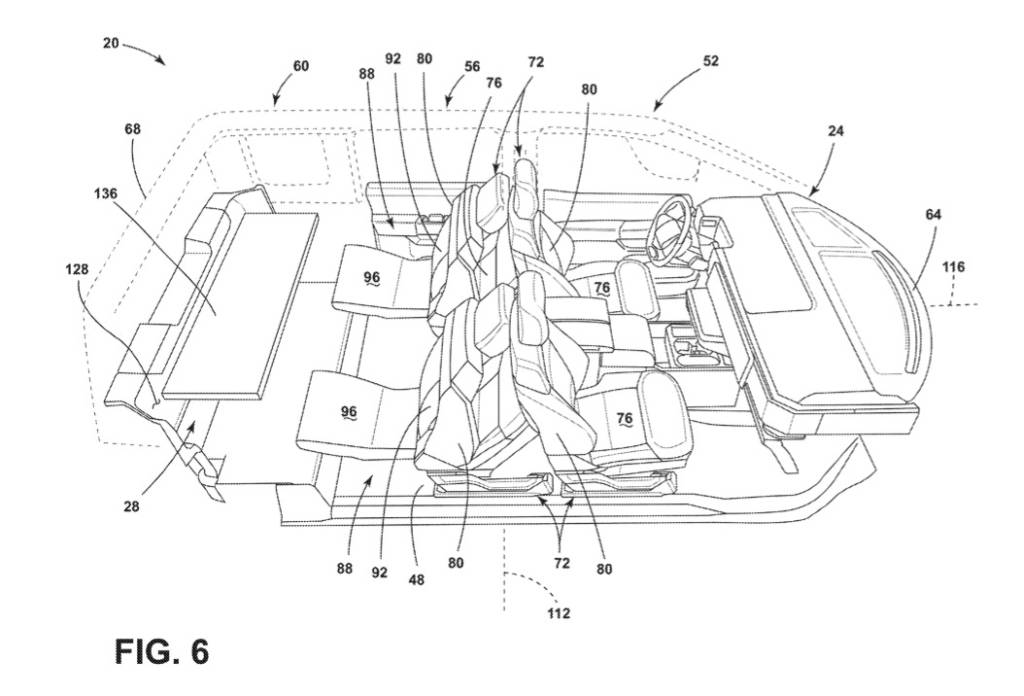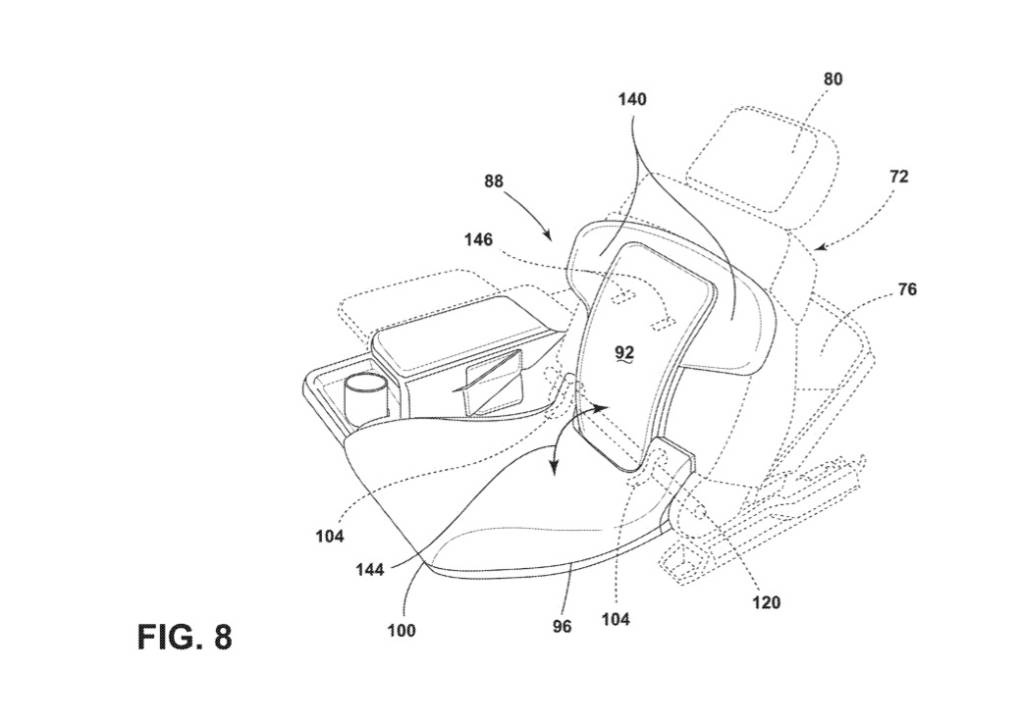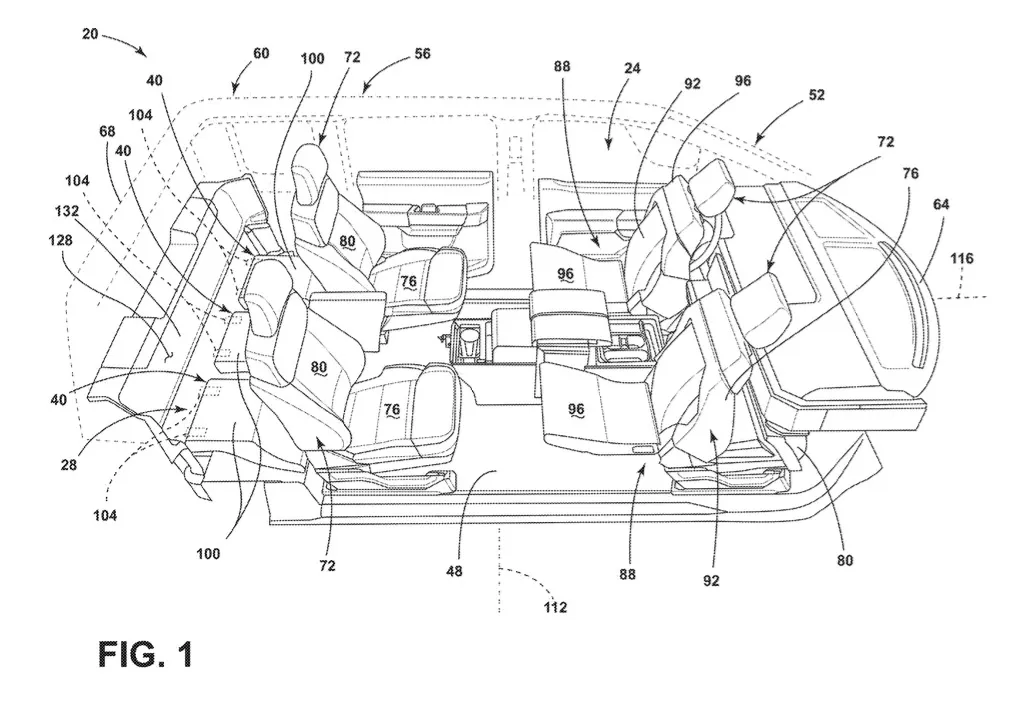A new Ford patent filing detailing an elaborate reconfigurable seating system has surfaced.
Published by the United States Patent and Trademark Office (USPTO) on Feb. 13, and originally filed on March 21, 2022, the application centers on seats with fold-out elements built into their backs. This allows seats to be configured as forward or backward-facing without physically moving them.

Ford reconfigurable seating patent image
In one configuration described in the application, the front seats could be moved forward and fold-out bottom sections deployed, which would allow front-seat occupants to sit facing those in the second row. In three-row vehicles, the second row could in turn be configured so occupants could sit facing the back, with the third row converted into a table, one drawing included in the application shows.
Some of these seating arrangements may not be allowed under current regulations, Ford admits in the application. But the automaker believes that “technology and the regulatory framework may evolve in the future to where such activity is safe and permissible.”

Ford reconfigurable seating patent image
The seating system described here differs a bit from the Ford patent applications published by the USPTO in late 2023. These also discussed seats that could be reconfigured to allow front-seat passengers to sit facing backward, but involved pivoting and sliding the seats to move them into different positions. Ford has also submitted patent applications for a retracting steering wheel and an in-cab work station, but the latter seems aimed more at pickup trucks than the three-row SUV hinted at in this latest application.
Ford plans to launch a new electric pickup truck codenamed T3 and a three-row SUV derivative of that model in 2025. Reconfigurable seating would likely be a good fit for the SUV, which Ford has said will aim for 350 miles of range. Ford has also trademarked the Lightstream name, perhaps for use on the T3 pickup or SUV.
